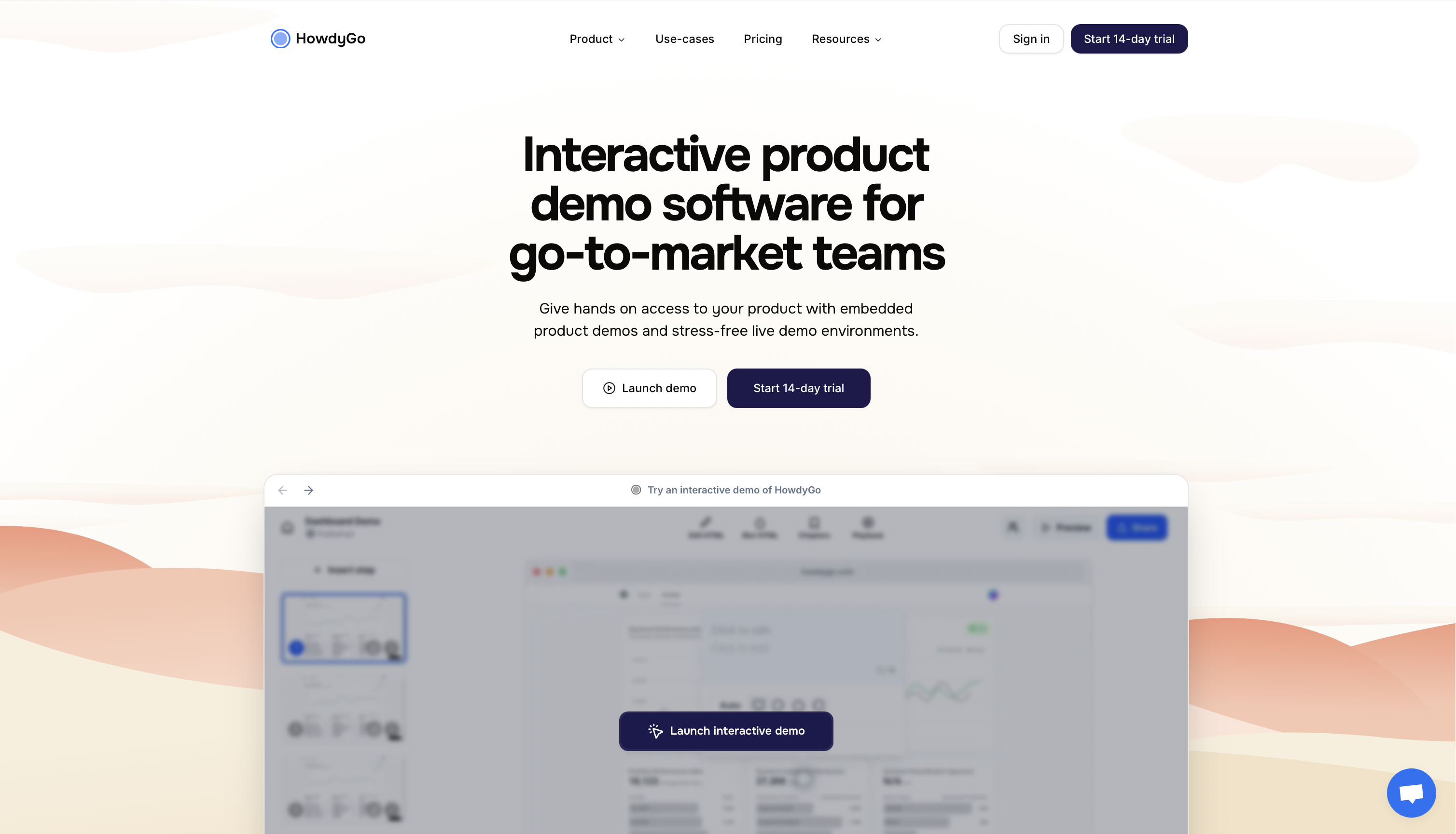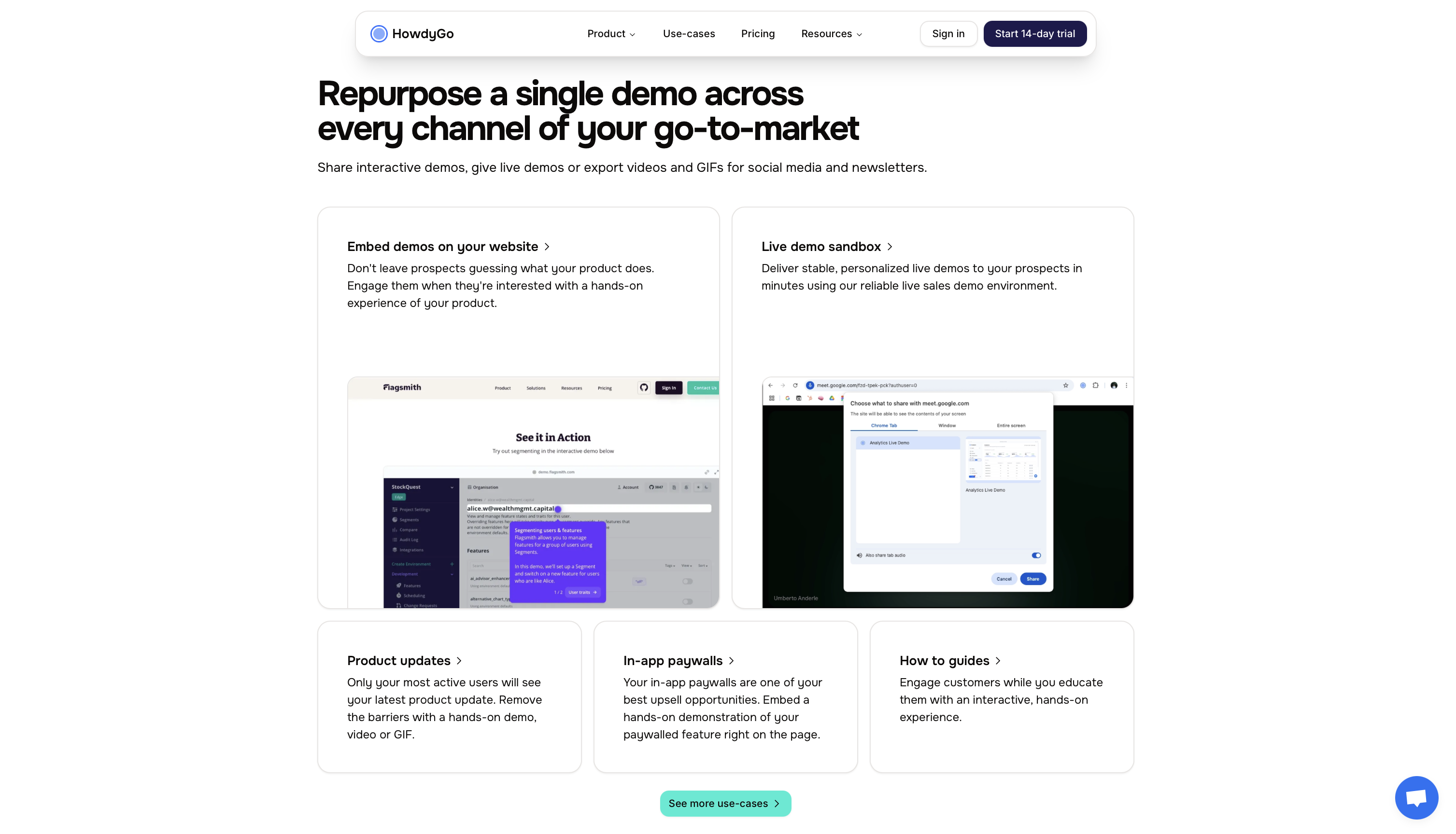
HowdyGo organizes its product messaging around cross-functional use cases (embedded demos, product updates, in-app paywalls) instead of user roles (Sales, Marketing, CS, Product). This works because different teams use the same interactive demo capabilities in different contexts.
Role segmentation would just repeat the same features four times with different framing. By organizing around cross-functional use cases, HowdyGo eliminates redundant feature descriptions and shifts buyer focus from “Can I build demos?” to “Where should I deploy them for maximum impact?”
HowdyGo was co-founded by Daniel Engelke, Umberto Anderle, and Tom Bruining in 2023. Headquartered in Sydney, Australia, the company focuses on building solutions for interactive product demos.
I’ve seen many demo platforms organize their messaging around user roles, like Sales, Marketing, Customer Support, or Product. Each team gets its own section or page explaining the same features from a role perspective.
HowdyGo skips this structure entirely, making the homepage and website role-agnostic. Instead, the homepage presents multiple cross-functional use cases: embedded website demos, product updates, how-to guides, in-app paywalls, live demo sandboxes.

Notice what’s missing: no role segmentation. These aren’t “sales use cases” or “marketing use cases.” They’re demo deployment scenarios that modern team members might use depending on what they’re trying to accomplish.
This reflects a deeper positioning decision.
HowdyGo targets “go-to-market teams” as a unified buyer rather than fragmented departments. The structure acknowledges that modern GTM work involves shared assets that flow across functions. Marketing embeds feature demos on the website. Sales adapts the same demo structure for live qualification. CS repurposes it for help documentation. Product uses it for feature announcements.
It’s worth noting that if HowdyGo chose to segment by role like some product demo tools do, it would create forced feature repetition. The same interactive demo capability would appear in Sales (for qualification calls), Marketing (for website embeds), CS (for onboarding guides), and Product (for feature announcements), just reframed four different ways.
By organizing around use cases instead of roles, HowdyGo eliminates redundant evaluation. Buyers don’t need to scan “Sales features,” then “Marketing features,” asking, “Which of these apply to my actual workflow?” They see “embedded demos” or “live demo sandbox” and immediately know if it’s relevant.
Moreover, this approach shifts focus from creation to repurposing and distribution. The strategic question isn’t, “Can I build an interactive demo?” It’s, “Where should I deploy this demo to maximize impact?”
Avoid this approach when:
The test: Does your product create something that gets used in multiple contexts across different teams? If yes, organize around those contexts rather than the teams themselves.
